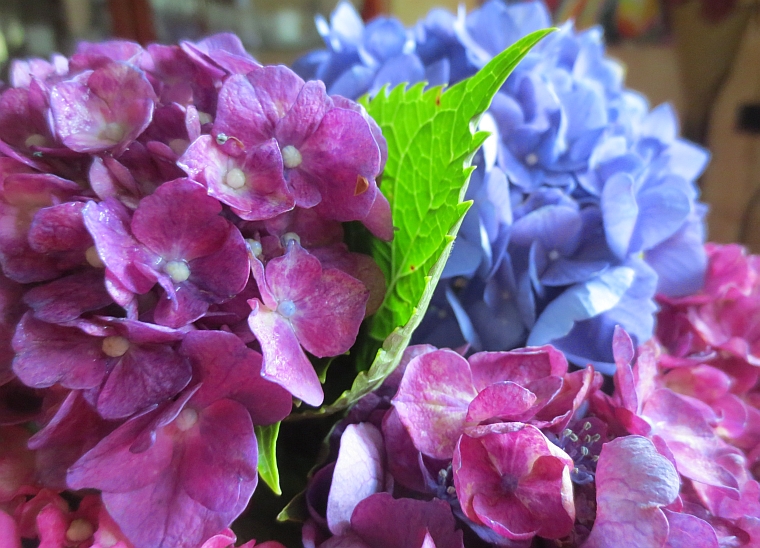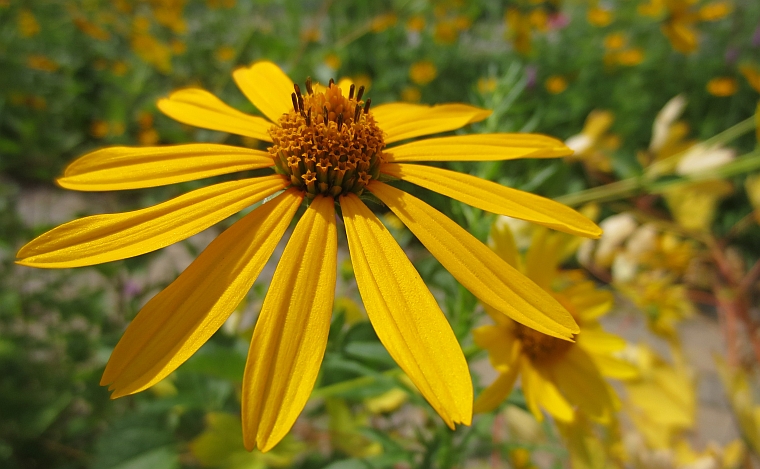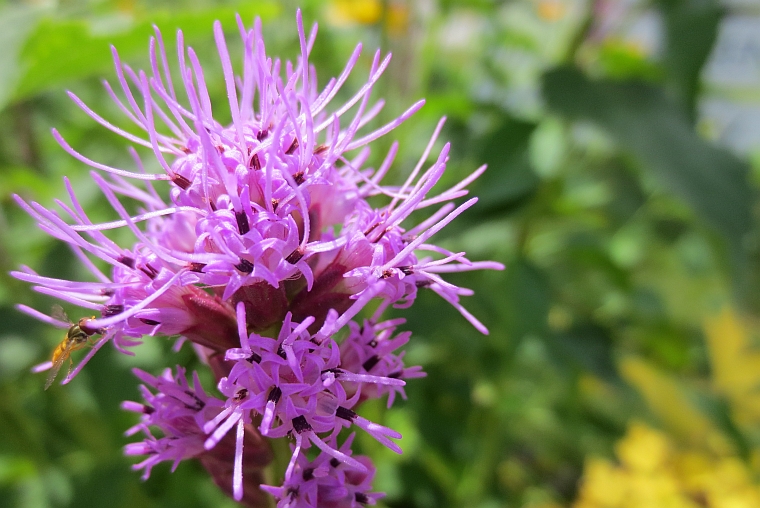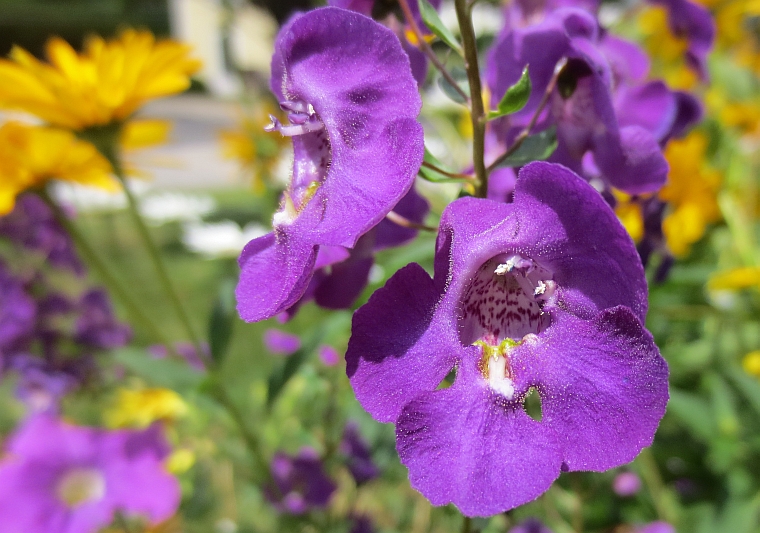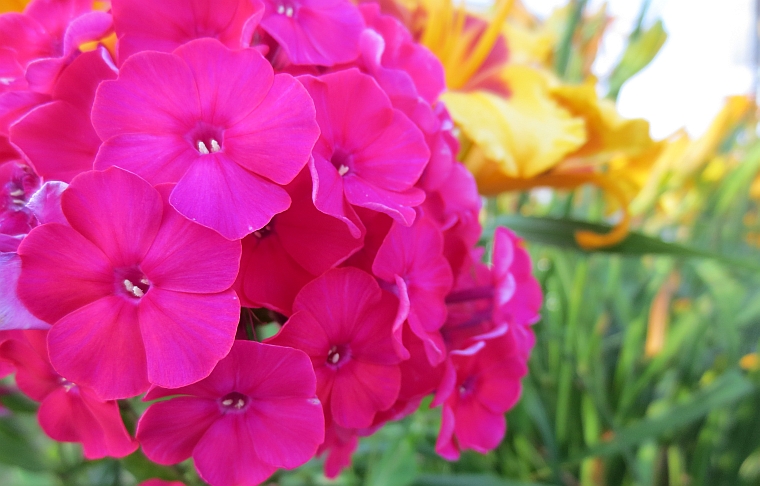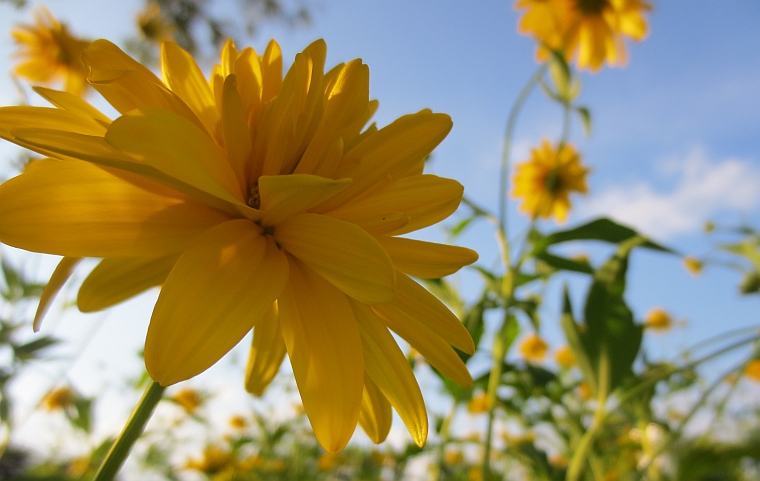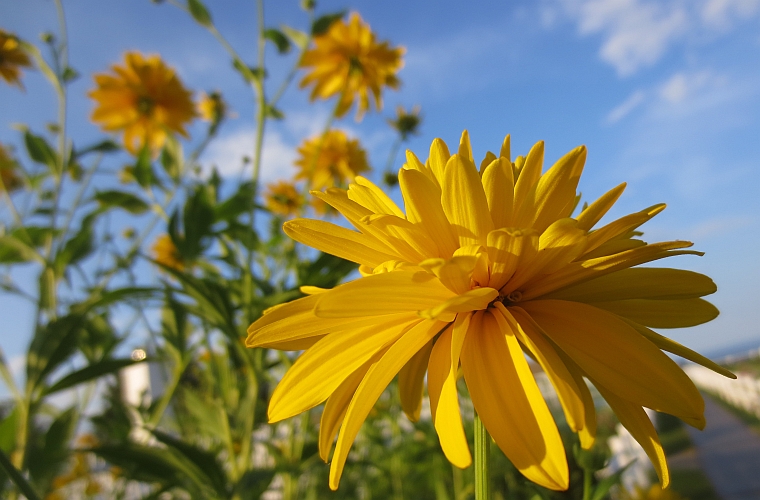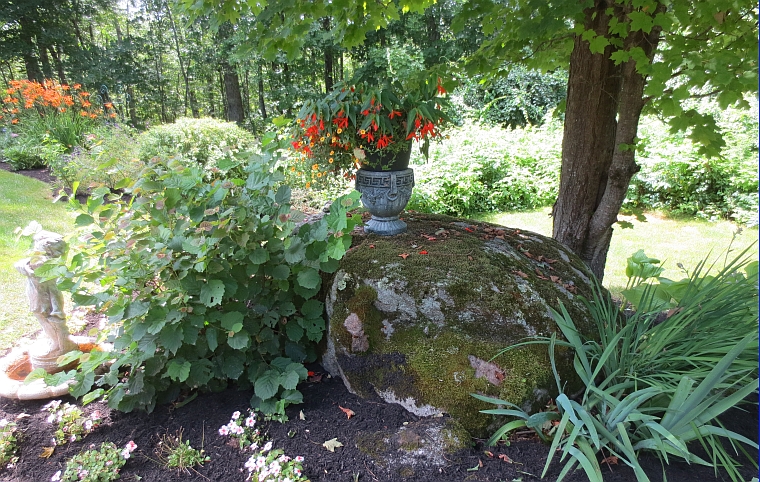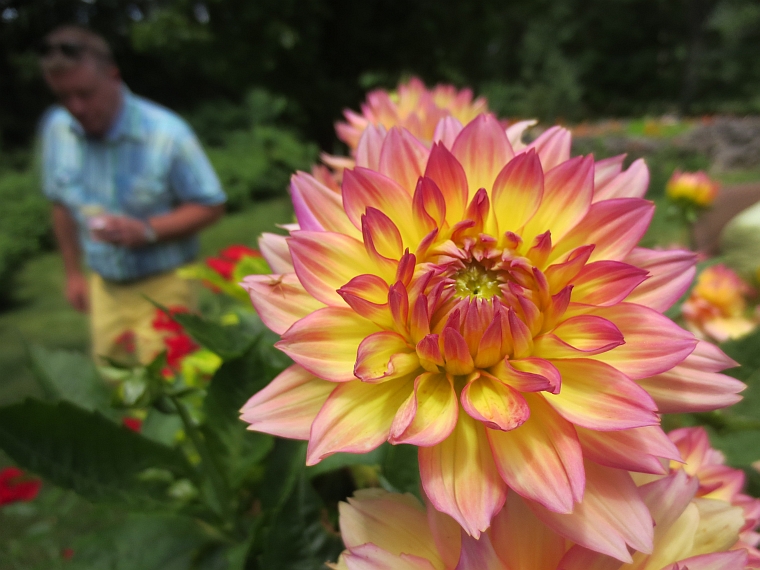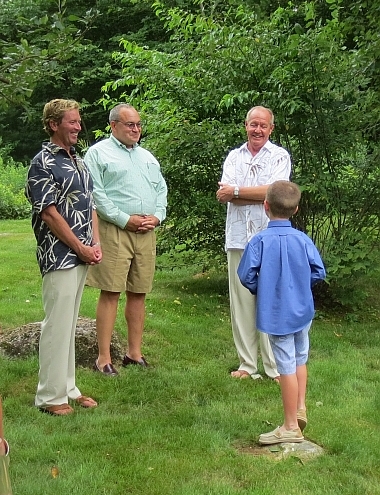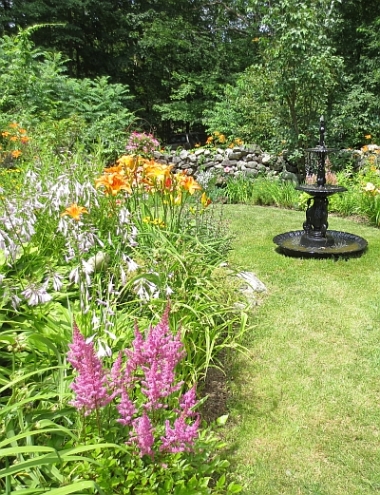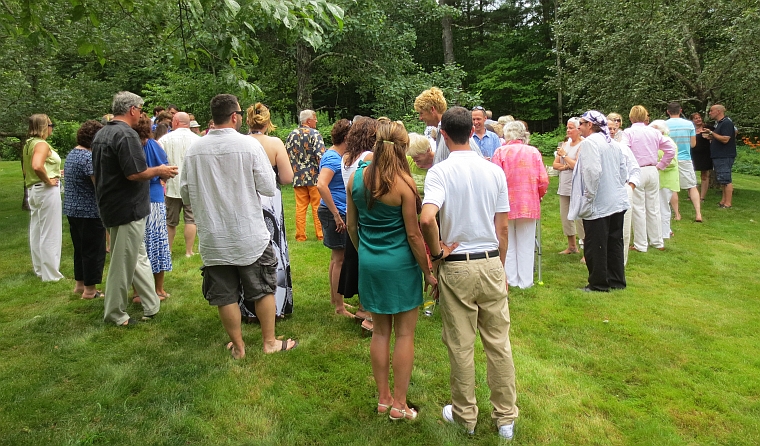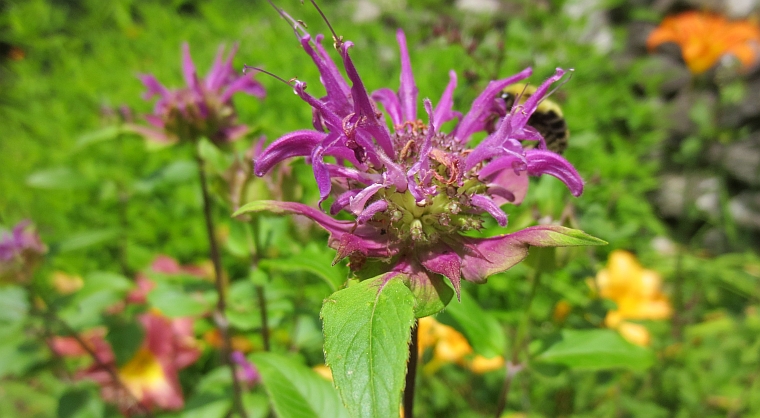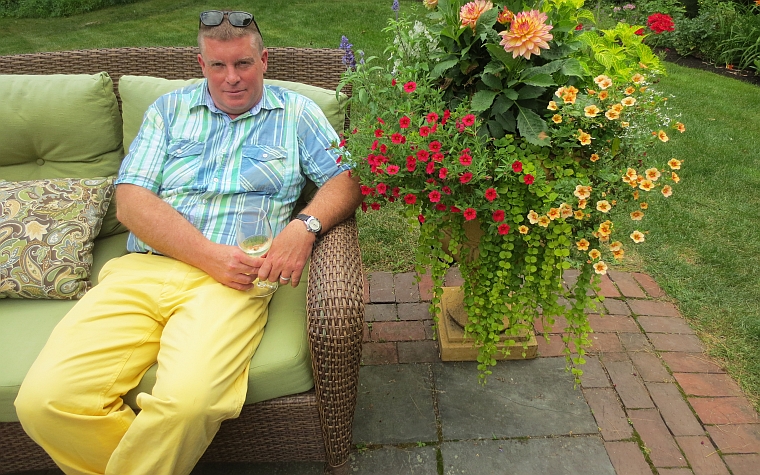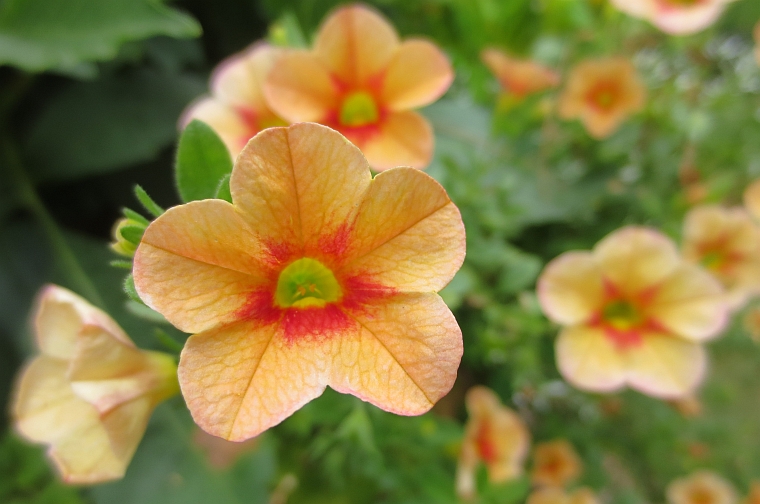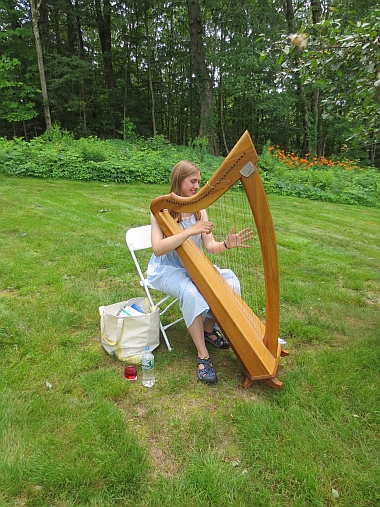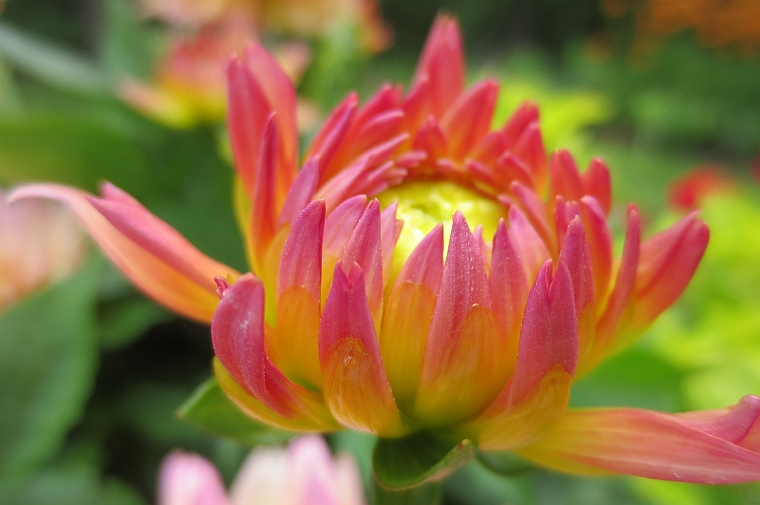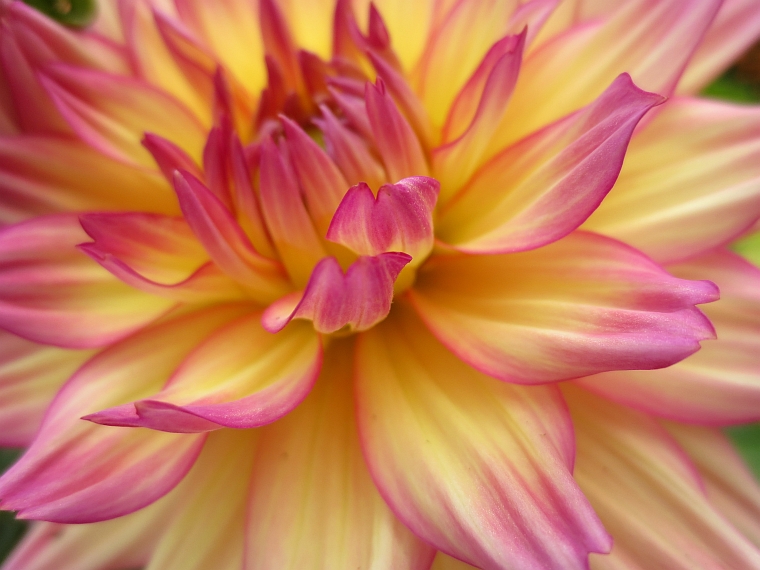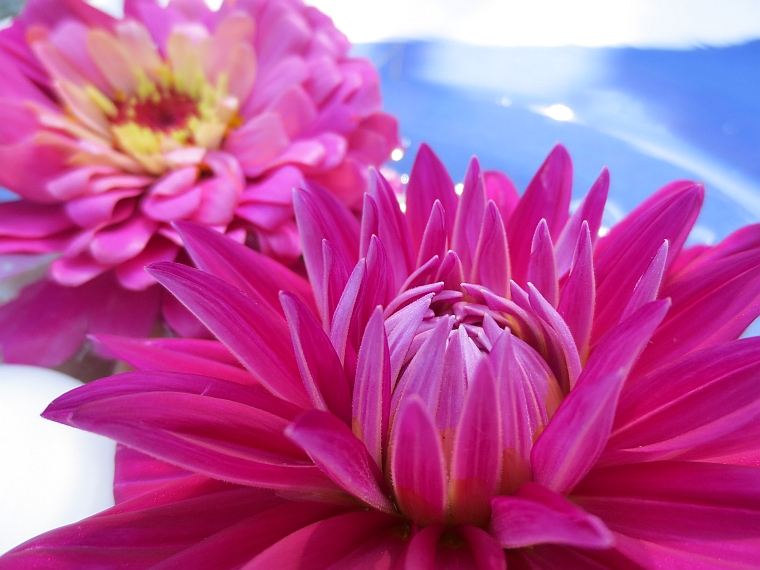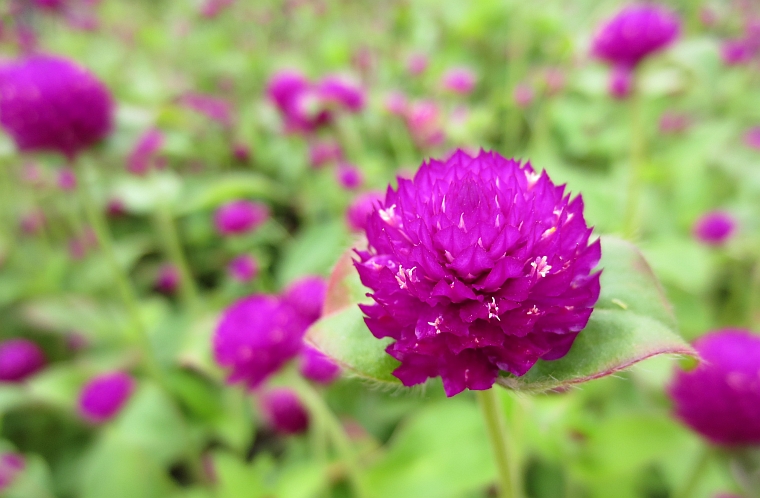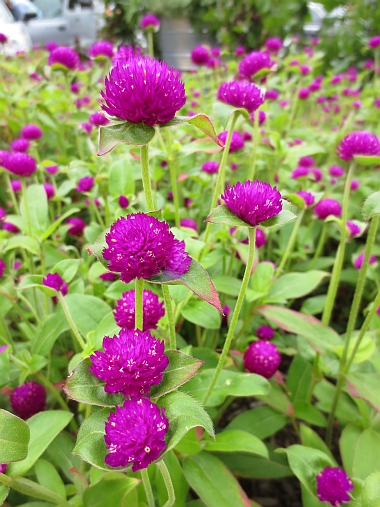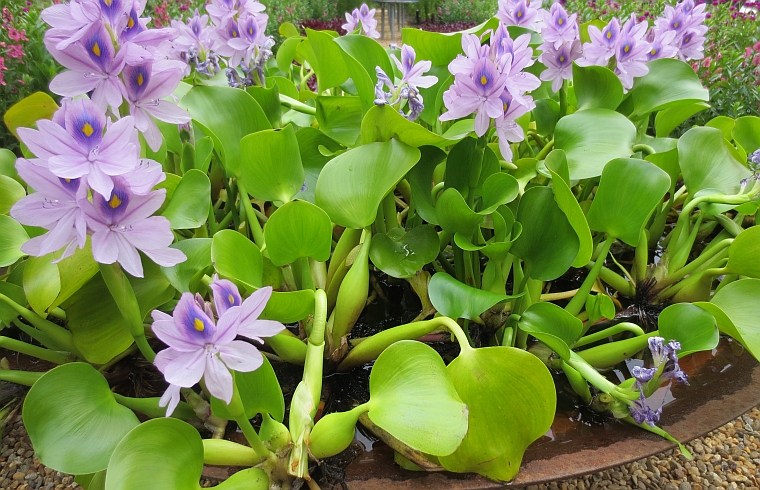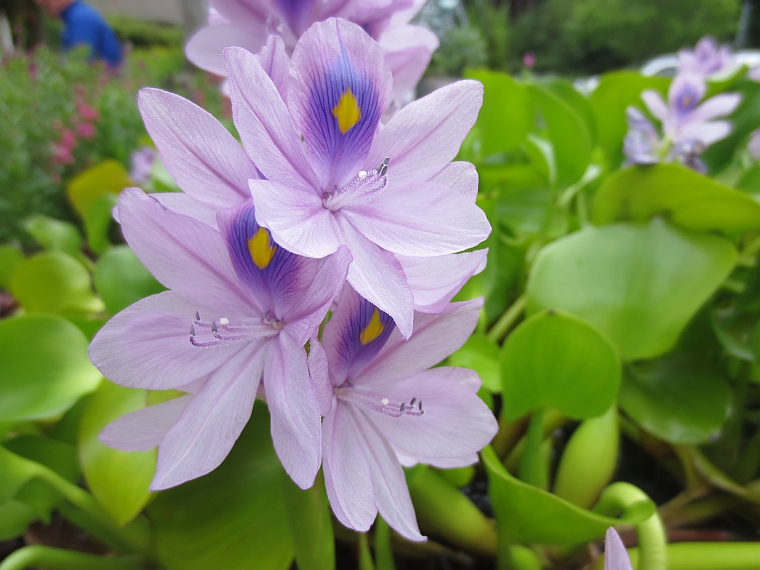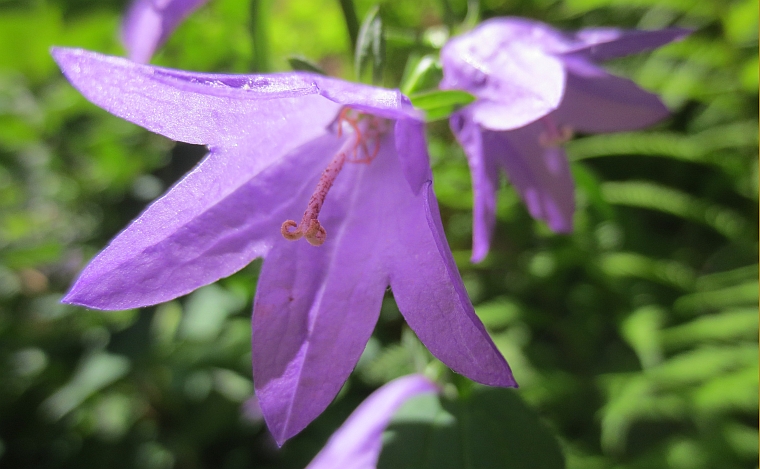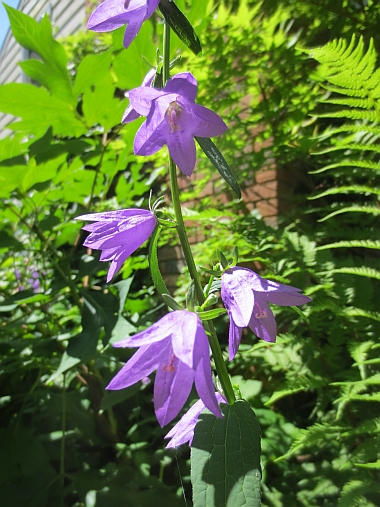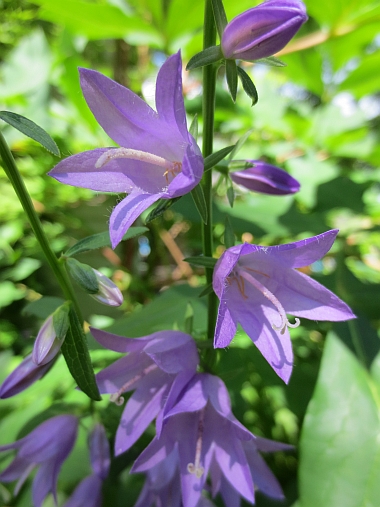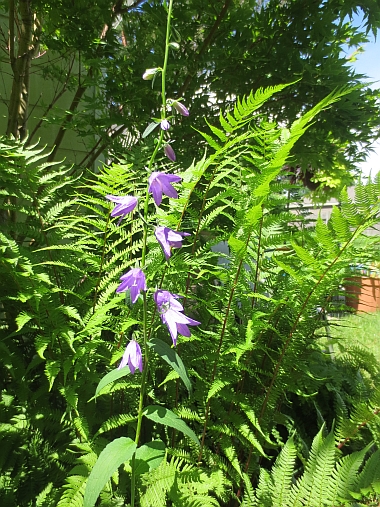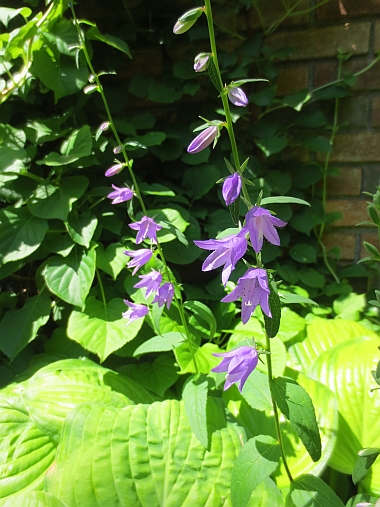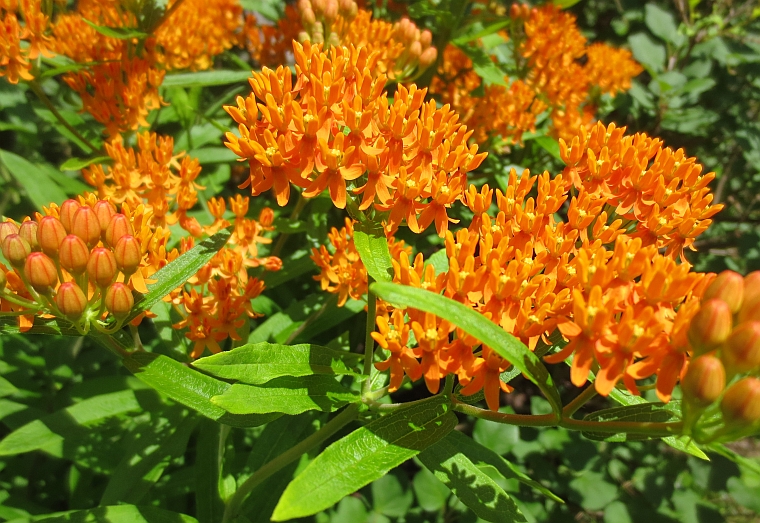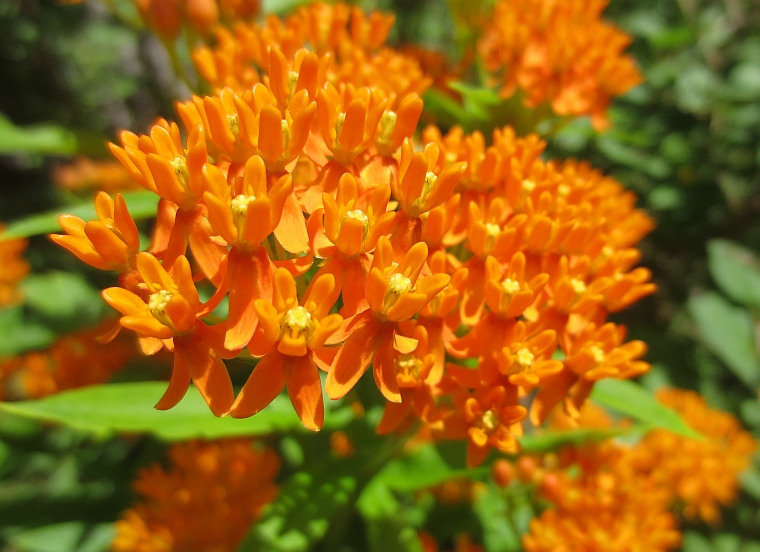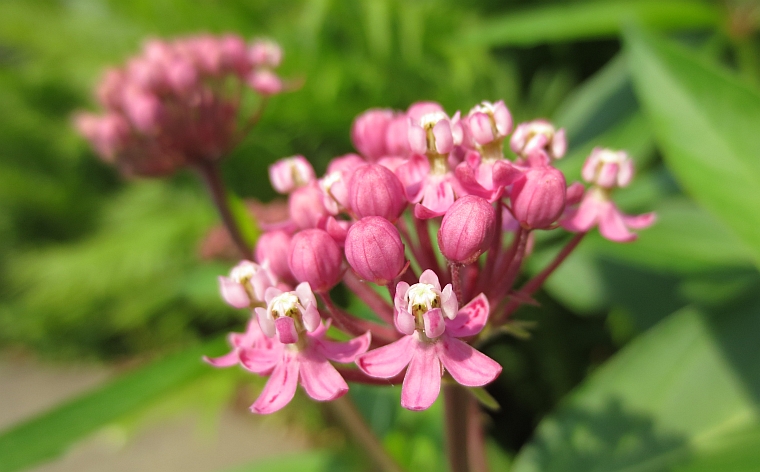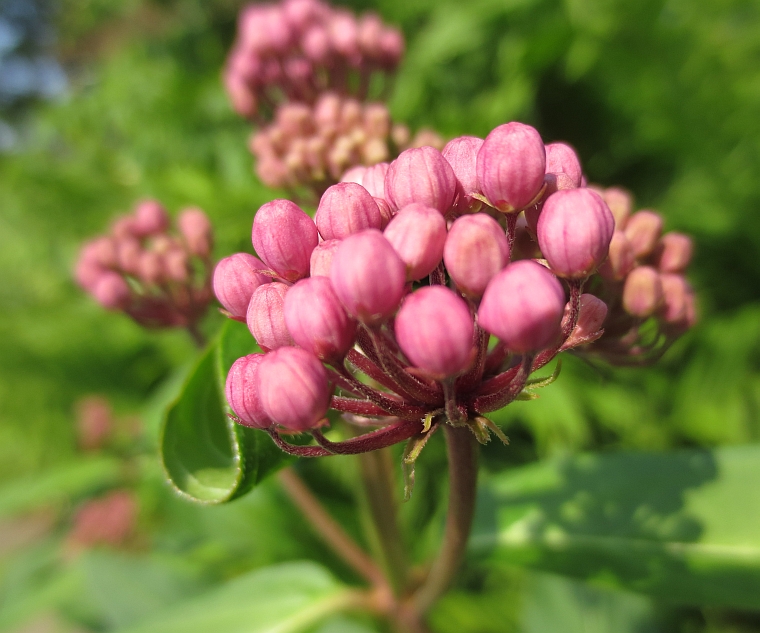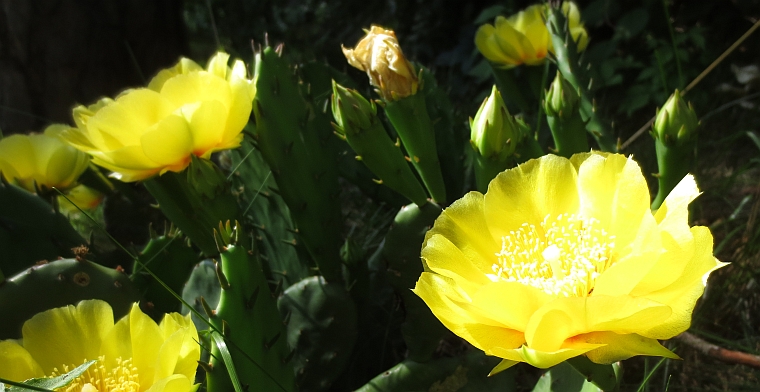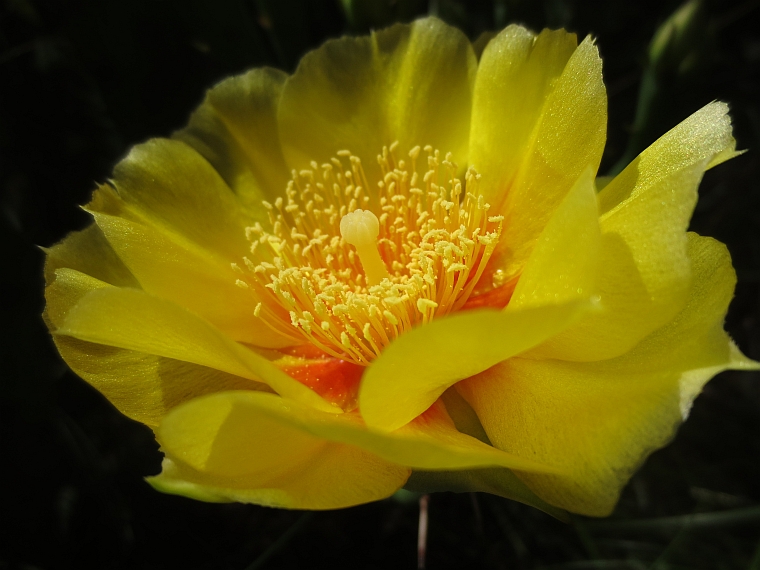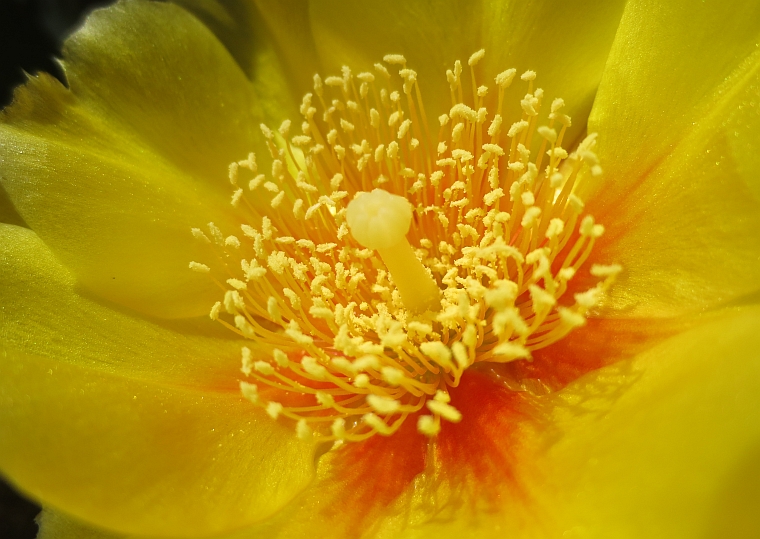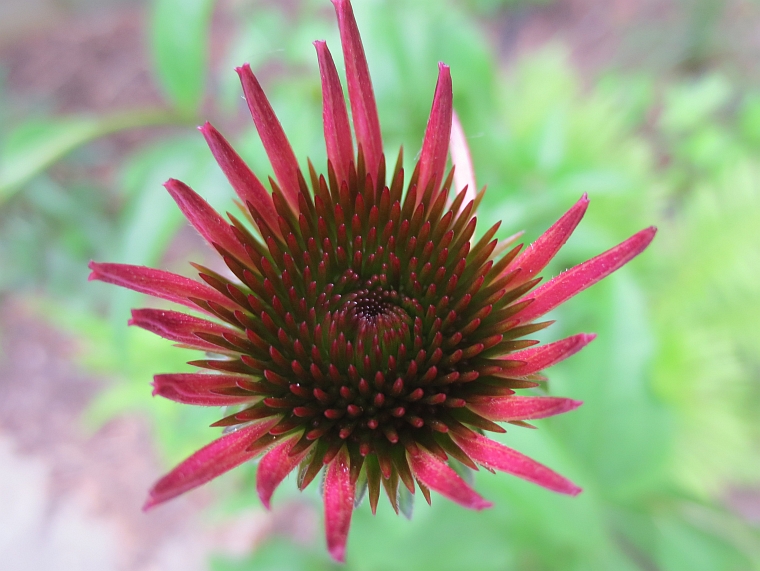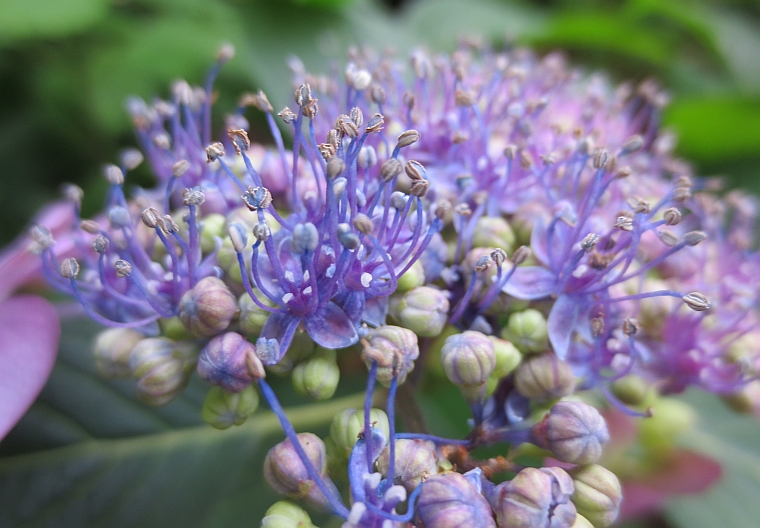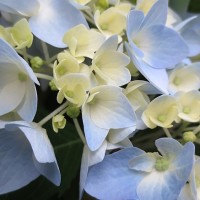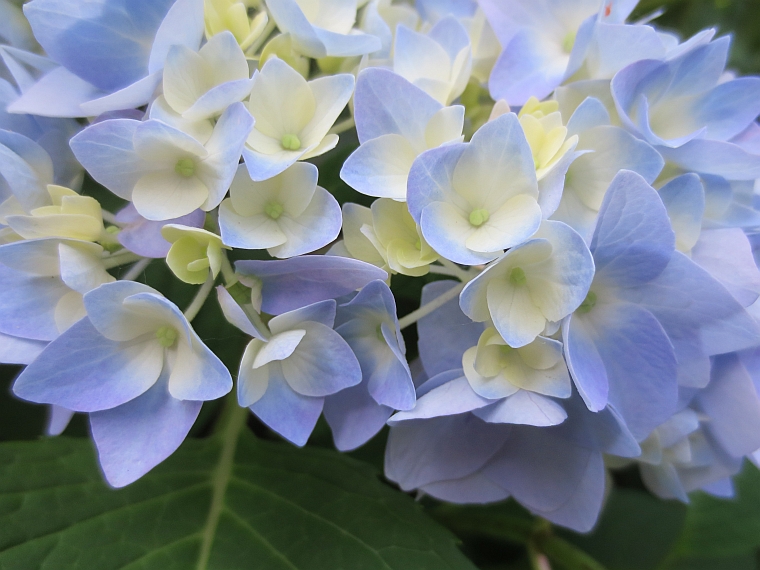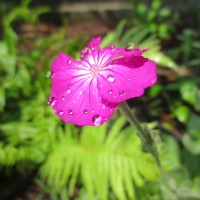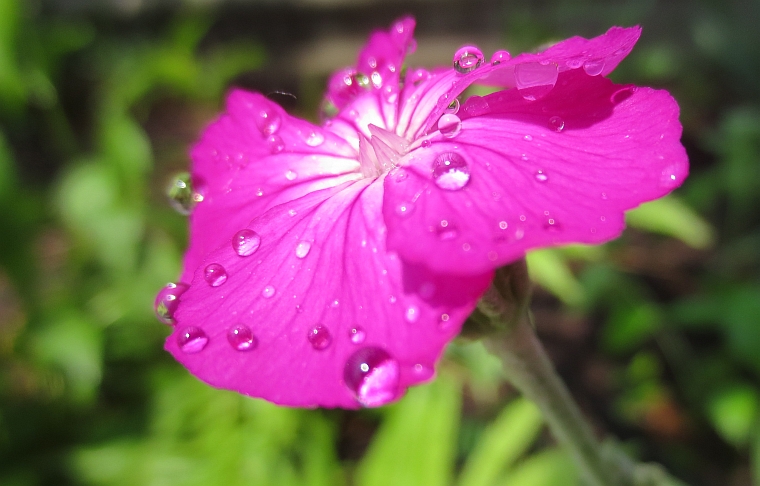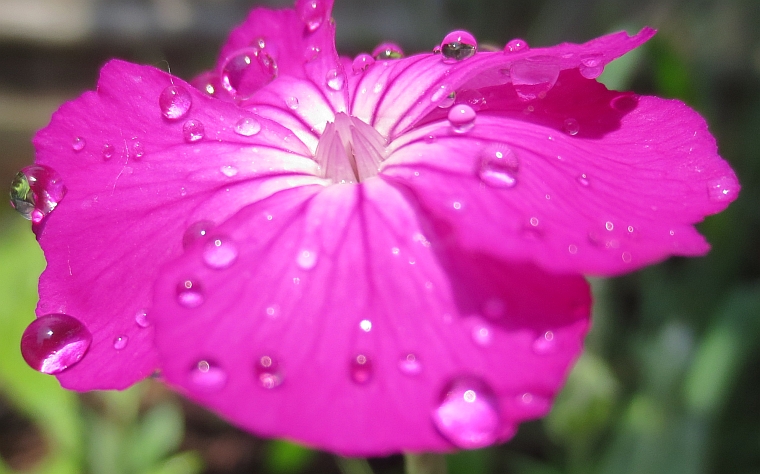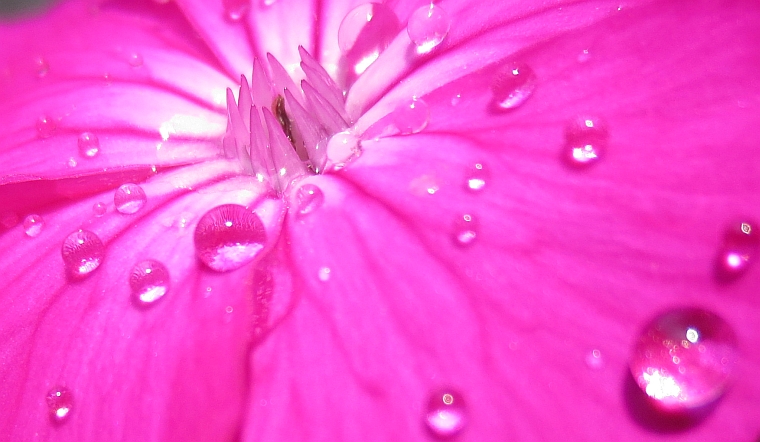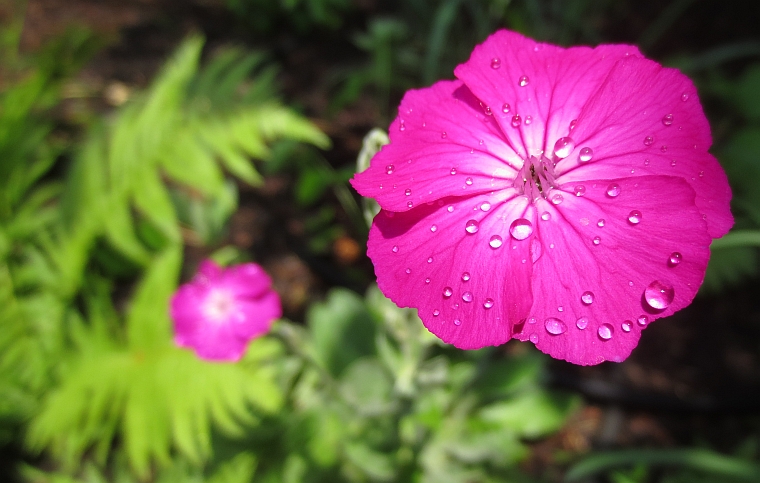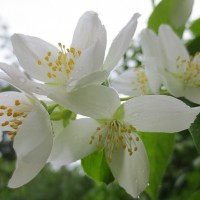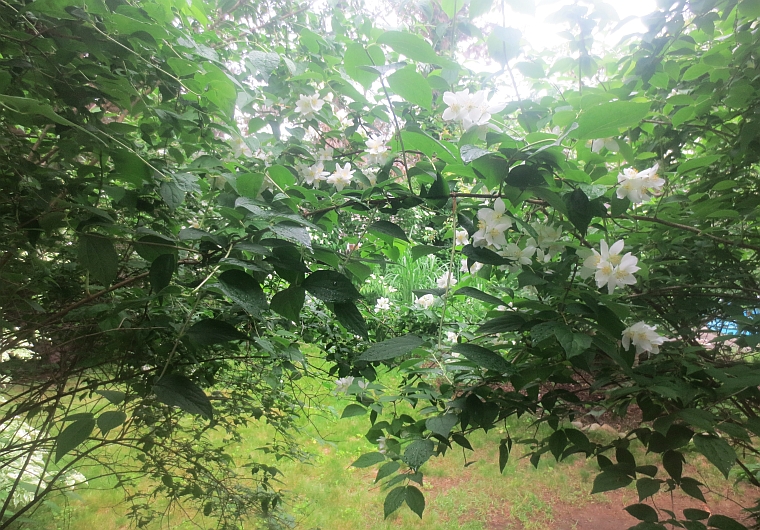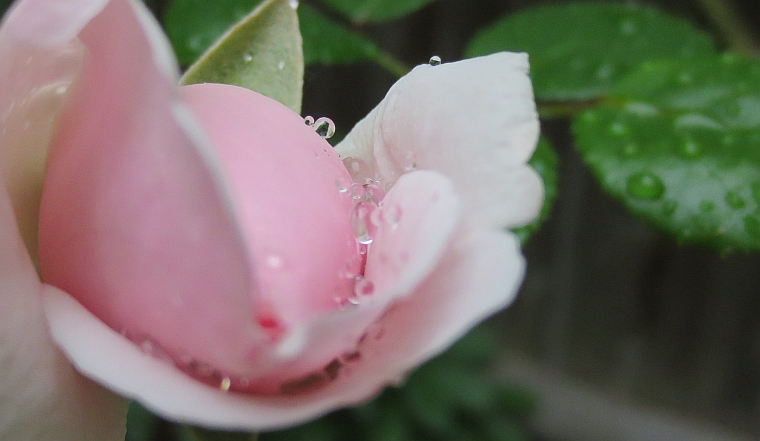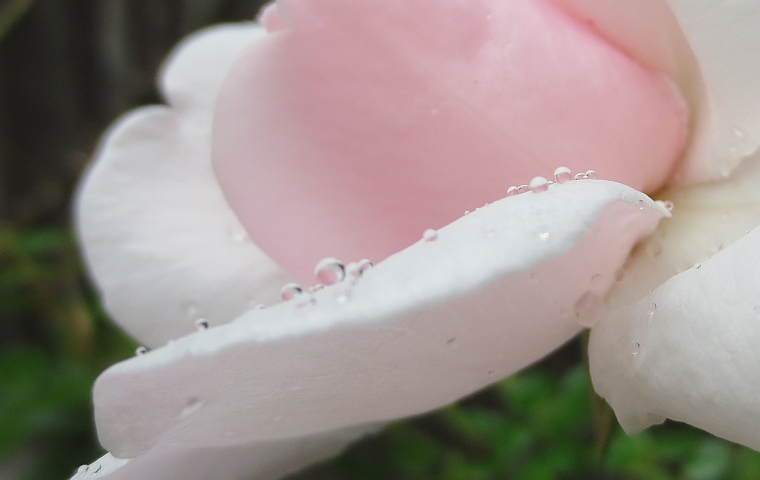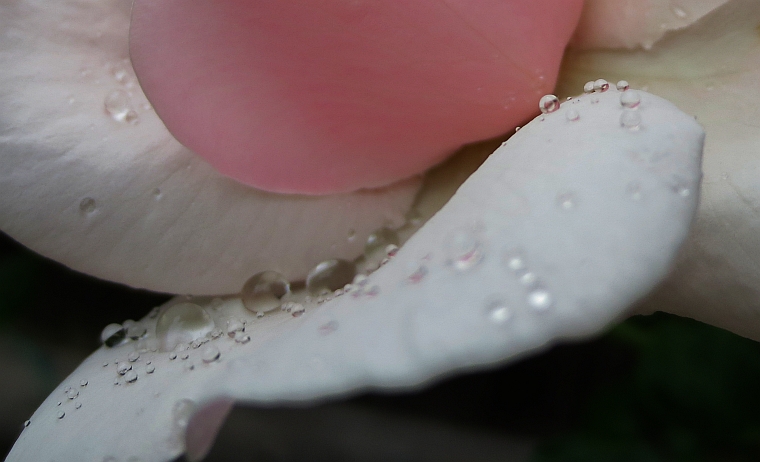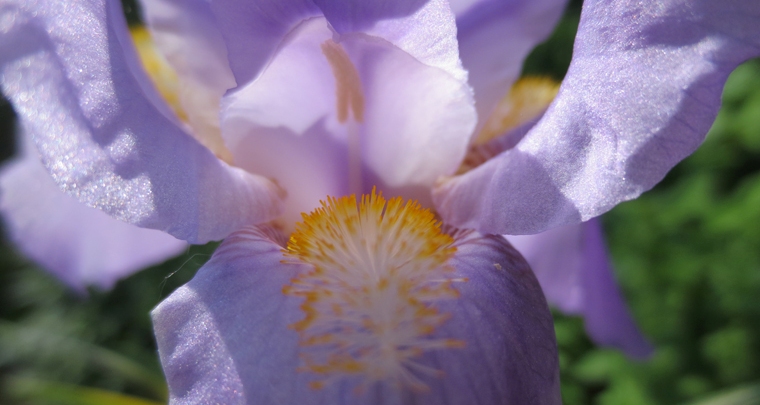I know she loathes them, but I happen to adore hydrangeas. Unfortunately, thanks to our soil and climate, we don’t get the gang-buster colors that those grown on Cape Cod are afforded. My pal JoAnn always brings some from her Mom’s garden when she visits, so this past weekend she came up for a small gathering and brought this beautiful bouquet of flowers. They put our pale pink and light blue shades to shame. No matter how much sulphuric acid or rusty nails or coffee grounds you use up here, we can never match the gorgeousness produced on the Cape. And maybe that’s for the best. It makes these moments that much more valuable.
Category Archives: Flowers
August
2013
August
2013
High Summer Flowers in Ogunquit
Being that we usually go to Ogunquit in May and October, we don’t get to see the flowers of high summer. On this visit, we did, and they were as lush and vibrant as expected. Our return to the Beautiful Place By the Sea was heralded by this explosion of color and form, and there’s no better way to begin the Ogunquit portion of our vacation than with a selection of those floral fireworks.
August
2013
The Wedding of Eric & Lonnie
A friendship that starts on FaceBook is not usually something that goes beyond a few ‘Likes’ or ‘Comments’, but since Eric and Lonnie live near Ogunquit, we took a chance and took them up on their offer to meet up at an opening night cast party for a production at the Ogunquit Playhouse. It was an instant friendship, as Andy took to them as quickly as I did – and we hung out whenever we could in Ogunquit.
It was a joy to hear that they were getting legally married at long last (after fighting the good fight for marriage equality in Maine), and it was an honor to make it onto their coveted invite list. Their wedding was the impetus for this vacation in fact, and the reason for our journey to Portland, onto which we piggy-backed our anniversary celebration in Ogunquit.
Their home is an exquisite respite in Gray, ME – a gorgeous combination of old and new, and the perfect conjoining of two complementary personalities who have served as an inspiration to any couple looking to make it last.
As often happens to me at weddings, I found myself incredibly moved ~ even more-so when talk turned to the trials and travails of what it took to reach such a moment in history. if you’ve never been denied the right to marry the person you love, you can’t know the joyous appreciation of when it finally happens.
The ceremony was simple and casual, but somehow more meaningful for it. Both Eric and Lonnie spoke from the heart, in vows that brought us all to tears, and it was a brush with grace to be in the presence of such love. It’s something that emboldens all of us as human beings ~ the universal good-will felt towards two people who love one another, and who have lived a life together and made the promise to keep going. It never fails to affect me.
On the beautiful grounds of their home, the guests gathered and surrounded the happy couple. It was an idyllic moment ~ the heat-wave subsided as a cool breeze arrived, the storms stayed away, and the company of well-wishers – and the wonderfully fun friends and family of Lonnie and Eric – made for an unforgettable day.
A fun side-note: I have always wanted to attend a party or event where a harpist played, and it finally happened at this wedding. I followed this charming young woman around as she plucked her strings and brought such heavenly music to the surroundings. I asked if I could take her picture, explaining how it had always been a dream of mine to have a harpist at a party. She was gracious and happily posed for my exuberant picture-taking. I think she thought I was a little touched. She was very intuitive that way.Â
August
2013
The Last Moments in Maine: At Stonewall Kitchen
Let’s begin at the end. After a week spent in Maine, the only way to properly finish things was a stop at the Stonewall Kitchen flagship store in York. It is traditionally our last stop on any Maine visit, right before we hit the highway back to New York, and it offers one last chance at the beauty and peace that the area affords. Mostly, I go to see the gardens and pick up their amazing hand-soap. (Though last time I did indulge in their impossibly decadent lobster BLT.) This time around I stuck to viewing the flowers, including these gorgeously-hued gems.
There are certain stores that sell a way of life, certain brands that exemplify a finer way of approaching things. Stonewall Kitchen is one of these. Along the veins of Martha Stewart and the Beekman Boys, the wares at Stonewall involve the serious art of cookery, done with a rustic elegance and refined presentation. Visiting their store in York, one is transported to a simpler, more beautiful time and place, when gardens and kitchens formed the focus of most happy homes. Cooking and baking are art forms, ones which I am slowly and deliberately trying to learn – just to make a dent in the kitchen. (Andy might say I’ve made more than dents…)
The best part of visiting this store is the inspiration it provides. For a superficial, shallow person like myself, presentation is everything – and everything about the Stonewall Kitchen presents well. From the winding path lined with perfectly-pampered plants, and a wisteria-lined arbor that gently shades the walk, to the seasonally-themed entrance of flower baskets or autumn gourds, the experience of this store encompasses all of the senses. As befitting its name, the main focus is on food, and there are endless products that tease and tantalize the taste buds ~ jars of countless salsas, jams, and chutneys, baking mixes for cakes and muffins and cookies, and tons of kitchen tools, utensils, and serving objects. Taken together with the helpful and efficient staff (even when the check-out line seems long, it moves at a rapid pace), any time spent at Stonewall is a balm on the hectic pace of life. It is our favorite way to end our time in Maine, and the kick-off to this series of vacation posts.
July
2013
July
2013
Love the Flower, Hate the Form
With a common-name like LadyBells one might think that I would adore this plant unconditionally. As it is, I have a few major conditions, and because of them I find it hard to love this Adenophora through and through. The flower is exquisite, with an elusive shade that almost borders on the blue. Not many flowers come that close, so those that do are highly prized. (Some contend there are no true blue flowers; I’m not that quick to be so definite, but I do know it’s a rare hue.)
My problem, therefore, is not with the flower, but with the form of the plant. Its style is too loner-like for my taste. I like my plants in mounds or mats, with groups of stems that combine to create an overall impression. The single and solitary nature of Adenophora goes against that. From a design standpoint, I know the power and importance of vertical aspects like this – my issue is a personal preference I cannot get over. The one small patch I have going in the side garden – brought in by accident with another perennial – has actually expanded into a mat of sorts, but the results, as seen here, still bother me. Again, some people adore the effect, and I do admit that when grounded by ferns or hosta it works – I just can’t bring myself to love it. Sorry, lady.
July
2013
The Butterfly Weed
It has the somewhat unfortunate common moniker of ‘weed’ attached to it, so I prefer the scientific name of Asclepias when referencing this favored stomping ground of butterflies and bees. A relative of the milkweed, these are the more refined border versions of that prolific native plant, whose colors have been honed into bright oranges and vibrant pinks. They make an excellent addition to the sunny perennial bed, as their colors are strong, and they produce at the height of summer.
Their milkweed association becomes more apparent when the flower-heads go to seed, producing the distinctive pods that we used to open and pry apart, releasing the feathery parachutes into the wind, a seed on the end of each. Like a dandelion, they were designed to spread far and wide by the lift of the wind. As such, these tend to re-seed throughout the garden if allowed to ripen (I usually dead-head the blooms so as not to weaken the plant for the following season, but the past few years it got away from me, so there are several more of these than intended. Not a bad thing for such a great plant.)
As mentioned, the butterflies love the Asclepias, and the caterpillar form especially may find its way along the stems, chewing on the developing seed pods. For the regally-striped monarchs-to-be, I allow them the snack.
This pink version grows slightly taller than its orange counterpart, falling closer in line to its milkweed kin. Its bloom time is also slightly earlier, but a bit shorter, making it the lesser of the two in my opinion. Still, I wouldn’t throw it out of bed or border.
July
2013
Strictly Prickly
The title of this post takes its name from a saying that my friend Chris and I first heard from a server in San Juan. We asked her if she was into women (hey, it’s the conversation you have in Puerto Rico when you rack up a $300 bar tab between two people) and she replied very matter-of-factly that she was “strictly dickly”. Well, me too. That brief nonsensical aside over, this is the prickly pear cactus – one of the rare cacti that is hardy in the Zone 5 winters of upstate New York.
This small patch is located on a Southern-slanted hill that I rarely visit, so it’s always a surprise when I hear word from Andy that it’s in bloom. It’s largely left to fend for itself on a rather barren piece of sandy soil, its only shelter the thinning limbs of a struggling pine tree. Yet each spring it rises miraculously from a pool of withered, desiccated paddles, and each year it has steadily expanded, happy in its dry environs.
The ‘prickly’ aspect of its segmented ‘leaves’ keeps me from getting too close for weeding, but I’ll risk the proximity to capture some of the blooms, as they are exceptional. The texture of the petals is almost like velvet, and of the clearest yellow, set off by a throat of flaming orange. Like a rose, these pretty things come armed, and that’s something I can appreciate. Prickly and pretty. I can only hope to aspire.
July
2013
Coneheads
The stalwart Echinacea, whose scientific name is known to most as a natural immune booster, makes a great summer plant in the Northeast. Commonly called the coneflower, it has a long blooming period that just began this past week, manages to stand up to the wicked heat we’ve had of late, and keeps its dark green foliage fresh until the fall. Hybridizers have gone overboard in developing fragrant varieties, in a veritable rainbow of hues. I haven’t had much luck with the newer ones – they are a bit too delicate and precious for the harshness of the locations for which I’ve desired them. (The one I did put in ended up turning black and croaking within a few weeks – never a good sign.)
The traditional pink variety, seen here in radial bud, is a much better option, even if it does tend to reseed a little too prolifically. These can rise high in a happy home, all the way to three feet tall, and slowly spread to form impactful clumps. They’re also a favorite of bees and butterflies, who aid in the pollination a bit too freely. Oh well, who am I to deny anyone their intoxication?
July
2013
Late-morning Lace-cap
The lace-cap hydrangea. If you think that the traditional hydrangea is overbearing and obnoxious (or even loathsome), this variety offers a subtler approach to flower presentation, delicately throwing out a few limited umbrels of “petals” that surround the true blooms. Like many people, I didn’t cotton to these in the beginning, more easily impressed with the hybridizers’ monstrosities, but as my taste has matured I find myself more enchanted with these blooms than the bolder flower heads of the flashier versions.
The plant has an airier feel to it as well – a little looser, less dense – that lifts the garden during what can be an oppressive time of overcrowding. This year I’ve come to appreciate the space between plants, something that most gardeners strive to fill as quickly as possible. That space, however, becomes integral as leaves fill in on their own and branches crowd together leaving little breathing room. In rainy seasons like the one we’ve had, circulation is of paramount importance, particularly around plants susceptible to mildew or fungal issues. Luckily, the hydrangeas don’t suffer from that, so for them it’s more a question of aesthetic value: the juxtaposition of the bold green leaves and these airy blossoms against a rich groundcover of bark mulch is a gorgeous combination.
June
2013
I Absolutely Do Not Loathe Hydrangeas
Unlike a certain someone, I absolutely love hydrangeas, even if they don’t always love me back. Our soil is not quite acidic enough to uniformly color these beauties deep blue, so they vacillate between purple and pink, especially as they mature. Some days, though, if the light is just right, and the sky is helping tilt them in the right direction, they’ll appear the closest to blue they’ll ever get. (By the way, you can nudge them into the blue region by modifying the soil to the acidic side. Many myths exist as to how best do this – coffee grounds, rusty nails in the soil, a diluted sulphuric solution – all go towards bringing out the blue in some hydrangeas.)
This variety is the now-ubiquitous ‘Endless Summer’ hybrid that blooms on new wood. Many hydrangeas only bloom on old wood, and if you have particularly punishing winters as we do in upstate New York, you can’t count on the buds surviving. Varieties like ‘Endless Summer’ provide blooms every year, so you need not worry so much when the winter turns harsh.
June
2013
Loud as a Lychnis
It is one of the smallest flowers in the garden right now, but due to its color it’s one of the loudest. (I can relate.) Refusing to be ignored, the flaming magenta hue of this Lychnis floats atop a much quieter puff of gray-green wooly foliage. While I’m not a fan of its structure (leaves low to the ground, long stems, flowers floating aloft), the color alone (and its re-seeding prowess) has kept it in the garden for a number of years.
This is one of those flowers that illustrates the power of color, and how the bold ones advance while softer ones retreat. I can always spot the first lychnis bloom, no matter how seemingly hidden by tall grasses and unruly wisteria vines it may be.
As I mentioned, I’m not a fan of its form. There’s a lot of middle space between the foliage and the blooms that remains empty. Some consider this look appealing, I myself do not. It gives it a bit of a gangly, weedy air.
But for that kind of color, I’ll compromise.
June
2013
You May Mock Me
This simple and somewhat forgettable bloom is that of the mockorange, and it possesses one of the most deliciously sweet fragrances of the early summer garden. Aptly named due to its olfactorial proximity to the orange blossom, the mockorange is a hardy shrub, rather plain to look at in foliage and branch. In fact, we had two ancient mockorange shrubs on our property when we bought the house, but they were almost unidentifiable as they had been neglected and didn’t bloom for a year or two. I chopped them back and amended the soil, and they returned to former glory. That same year I planted two nursery-procured pots in the backyard, in spots that were, and remain, slightly too shady. They bloom now because they have grown tall enough to tower above the beginning of the roof, reaching the run and showering their sweet perfume from high above. Unfortunately, that’s a bit too high, and they’ve overreached their allotted space. As such, they will need to be cut back drastically this year once they finish their blooming period.
The time period immediately after flowering is usually the best time to prune spring blooming shrubs. Flowering cherries and dogwood and lilacs form next year’s flower buds during the summer, so if you wait until the middle of the season you run the risk of cutting off next year’s blooms. Of course, with the heavy pruning job I have planned for these monsters, there will likely not be any flowers next year. But the backyard needs to be cleaned up, and I’ve let this go long enough. It’s time to get brutal, just as soon as this season’s blooms cease emitting their delectable scent.
June
2013
June
2013


